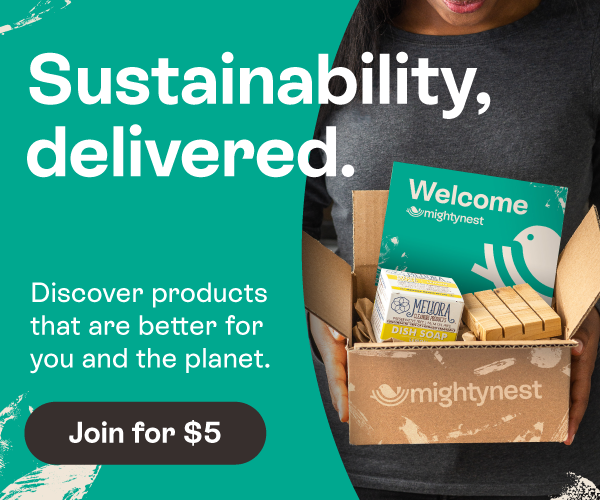
There’s something that I need to confess…I am a HUGE dog lover! As a child, I always wanted to be a veterinarian. I worked all throughout high school for our local vet, taking care of the kennel, running labs and assisting with surgeries and procedures. Then I started college with a semester full of science classes and that’s when my dream came to a screeching halt. C’est la vie.
I have two dogs, Fern and Fiona. They are my babies, our children’s buddies and an important part of our family. So, when I joined the MightyNest team and began to learn more about BPA, lead, flame retardants and other harmful toxins that are so prevalent in our daily lives, I immediately questioned the health of my dogs.
Think about it, in addition to eating and drinking, dogs use their mouths to manipulate objects and explore their surroundings, much like we use our hands. So, doesn’t it make sense that they too would be vulnerable to cancer, heart disease, diabetes and a whole host of other health problems as a result of toxins in their environment?
I set out to educate myself on this concern, but was unable to find any studies related to BPA exposure and dogs. However, an overwhelming majority of humans have detectable levels of BPA in their bodies, so it stands to reason that dogs do as well. I'm also concerned about lead exposure. Here’s what I’ve learned.
- A very easy way to limit your pet’s exposure to BPA is to switch from plastic food and water bowls to tempered glass or stainless steel. This is especially important if you leave a bowl of water outdoors for your dog in the summertime, as heat tends to accelerate the leaching process.
- Rather than keep your pet’s dry food in a plastic storage container, use an air tight steel container.
- Try to avoid canned dog food since the lining of these cans contains BPA. If your pet is solely on a canned food diet, you can begin the process of switching to a dry diet by slowly incorporating dry food into their canned. Over time, eliminate the canned food completely. If your pet is on a canned food diet because they are unable to eat hard, dry kibble, you might want to consider making your own dog food instead. This website is a great resource for dog food recipes.
- Many dog toys contain PVC, phthalates, lead and/or BPA. You can minimize your dog’s exposure by choosing organic-source rope and fabric toys.
- If your pet is likely to chew on it, try to buy the least toxic option available. This includes all bedding, leashes, collars and toys. I found healthystuff.org to be a good resource for identifying the safest pet products on the market today.
- Since chemicals are readily absorbed through the skin, it makes sense to use an organic dog shampoo and non-toxic flea and tick control products.
- Lead poisoning can be attributed to exposure to pesticides that use lead. In addition, if your dog drinks from a water dish or chews on a toy that is covered in lead based paint or glaze, they run the risk of lead poisoning.
- Aside from being a choking hazard, golf balls contain high levels of lead, so it's best to keep those out of your dog's reach.
- Lead poisoning affects many organ systems, including the GI tract. Signs of lead poisoning include vomiting, diarrhea, seizures, muscle spasms and/or coordination problems.
Although we do not know what the specific effects are of BPA, PVC, phthalates and lead to a dog’s health, I’m willing to take precautionary measures to ensure my pets live long and healthy lives. If you are interested in learning more, check out Green Paws - a Natural Resources Defense Council initiative.
Are you a dog lover also? Here at MightyNest we are always looking for ways to keep your family safe and are considering adding a line of non-toxic pet supplies. Let us know what you think. What kinds of safe, non-toxic pet products would you like to see?

